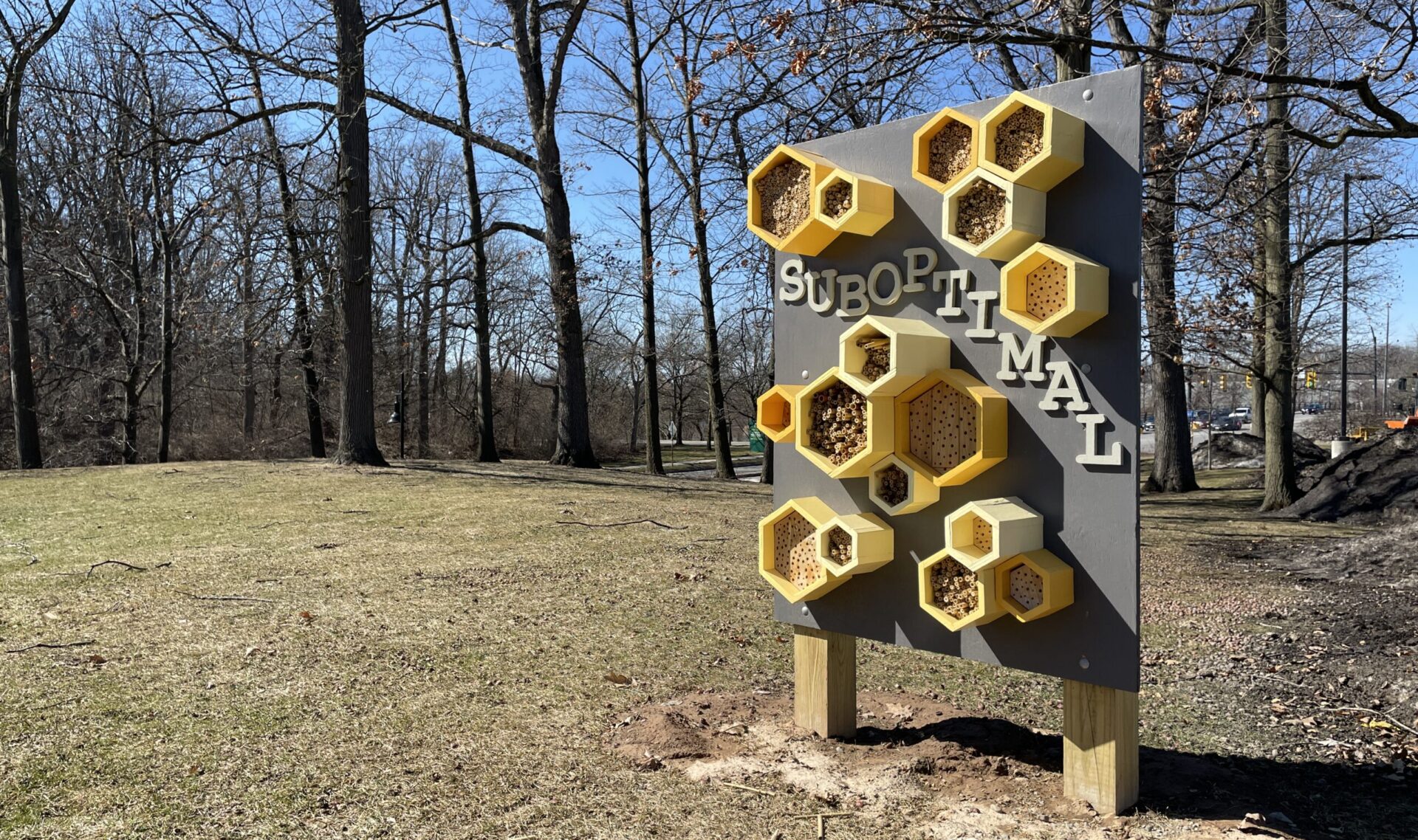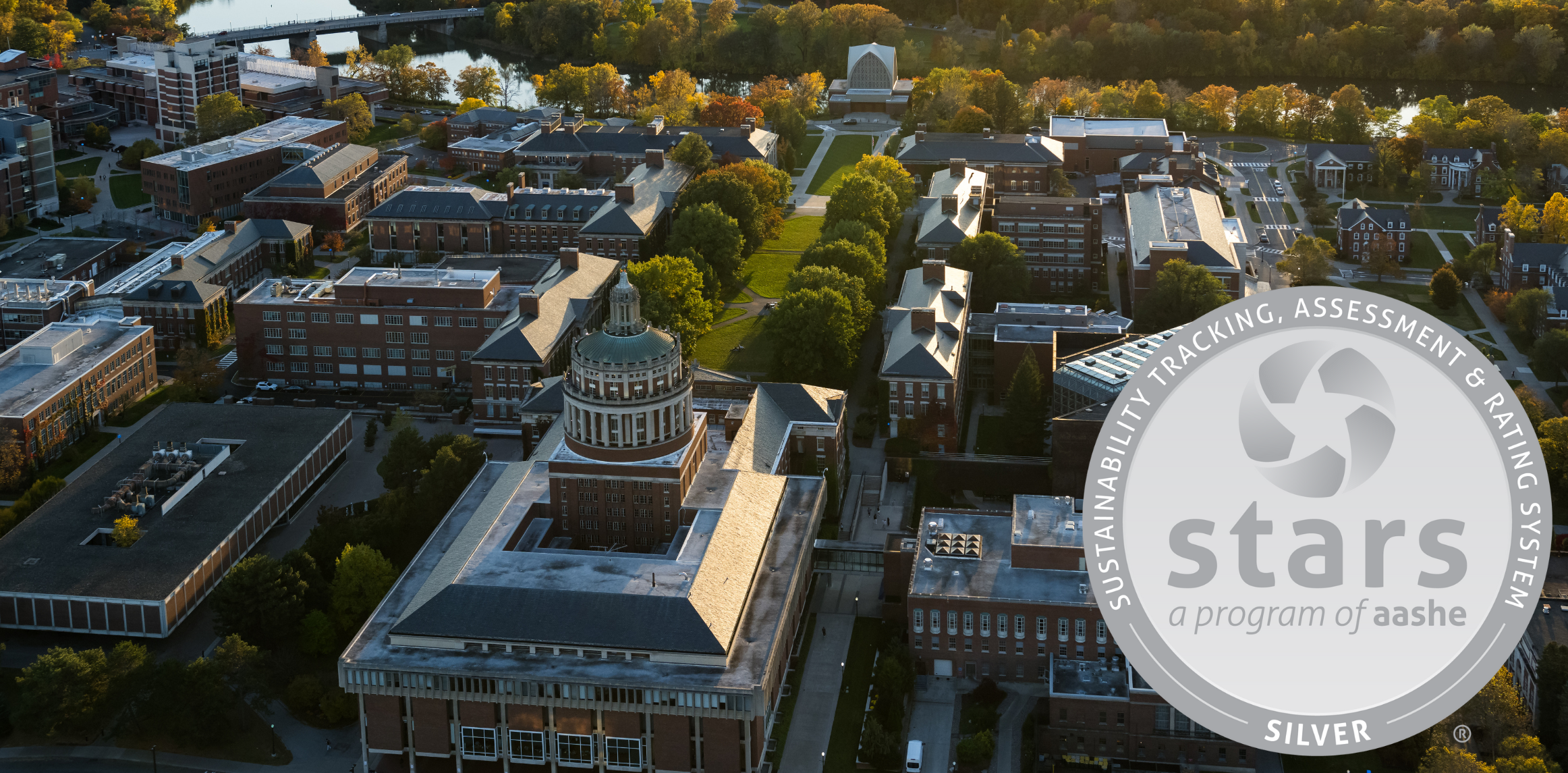A new installation on the University of Rochester’s River Campus provides solitary bees with a place to nest while offering students and faculty an opportunity to reflect on the importance of native pollinators and the threats they face.
“Suboptimal Sanctuary”, an environmentally themed bee domicile designed and constructed by students in Allen Topolski’s Advanced Sculpture class following discussions with Bob Minckley, professor in the Department of Biology, and Sahara Walto, founder of the University of Rochester’s Bee Campus USA. The project highlights the vital role of native bees in local ecosystems and the suboptimal conditions they face owing to human activities causing habitat destruction, deforestation, and pollution.
Located near a major pollinator garden along a well-traveled pathway from Park Lot, the piece features small cavities designed for solitary bees to build their nests. Unlike honeybees, these native pollinators are non-aggressive and play an underappreciated role in biodiversity and food production. The installation is strategically placed away from foot traffic to ensure that both people and pollinators can coexist peacefully. Its placement and visual appeal naturally draw attention, sparking curiosity and encouraging visitors to learn about its dual purpose as both an artistic piece and a habitat for solitary bees that nest in bamboo, straw, and other small cavities.
This initiative builds on the ongoing collaboration between University of Rochester Facilities and Grounds and student members of Bee Campus USA, who have worked over the past three years to establish pollinator-friendly gardens on campus. These gardens are planted primarily with native plant species, reducing the need for pesticides while supporting local biodiversity.
Beyond supporting pollinators, the project aligns with the broader Bee Campus USA initiative, which aims to educate students, staff, and faculty about the importance of pollinators, particularly native ones, and the threats they face. Minckley states, “Many times, people just need to be exposed to new ideas to adopt them. We are in the business of education here at UR, so this is part of that mission.”
Look for a flurry of bee activity in the spring as pollinators gather pollen and seal their nests with mud. By early June, the nesting cycle will be complete, with bees lying dormant until the following spring. A celebration event is planned for later this spring to highlight this student-led effort to increase pollinator awareness through art. Stay tuned for more details!
Luisa Luna-Gastelum ‘25




